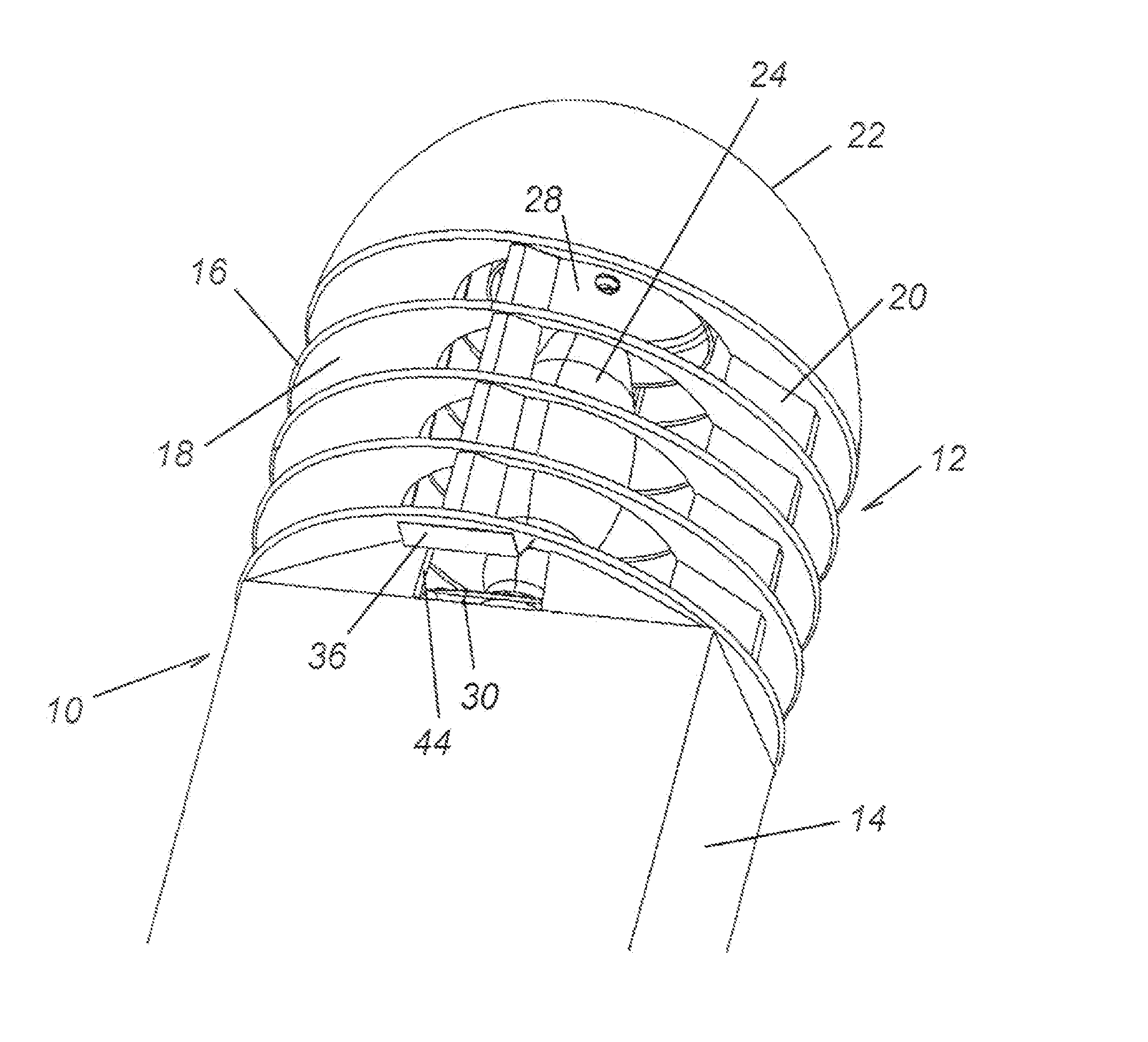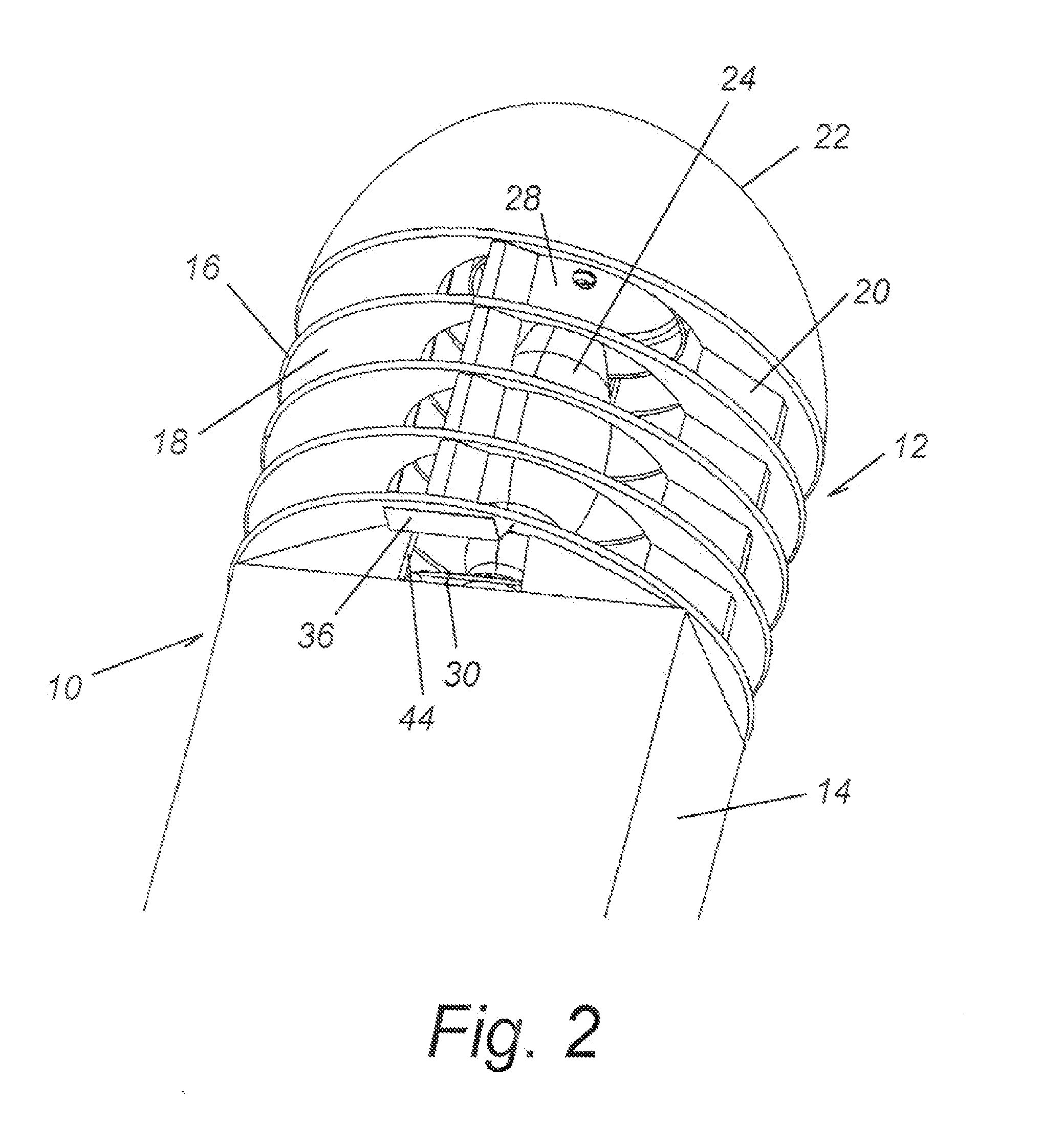Bollard lamp
a technology of boltards and lamps, applied in the field of boltard lamps, can solve the problems of increasing the number of bollards required for any given design, requiring unnecessary space on the path, etc., and achieve the effect of improving illumination
- Summary
- Abstract
- Description
- Claims
- Application Information
AI Technical Summary
Benefits of technology
Problems solved by technology
Method used
Image
Examples
first embodiment
[0015]FIG. 1 illustrates a first embodiment employing a bollard 10 of rectangular cross section. A lamp, generally designated 12, sits atop the bollard post 14. The lamp 12 is made up of what is commonly referred to as a louver stack 16 composed of a plurality of louvers 18 which are spaced apart in the longitudinal direction of the bollard post 14 and supported by vertical elements 20. A dome 22 provides an opaque cap for the lamp 12. The louver stack 16 is shown to be cylindrical in shape but may be of other shapes including hemicylindrical if employed against a wall.
[0016] Located within the center of the louver stack 16 is a primary light source 24. The light source 24 is shown to be a bulb.
[0017] The louvers 18 extend outwardly past the periphery of the top end of the bollard post 14 at least in one segment. Below the umbrella of the lowermost louver 18 which is most adjacent the top of the bollard post 14, an LED module 26 defines a down light means for directing light downwa...
second embodiment
[0018]FIGS. 2, 3 and 4 illustrate the present invention. The basic structures of the bollard post 14, louvered stack 16 with its louvers 18 and the dome 22 are the same. A primary light source 24 is also similarly positioned.
[0019] To achieve a down light means for directing light downwardly about the base end of the bollard post 14, a top reflector 28 is located above the primary light source 24. This top reflector 28 receives light from the primary light source 24 and directs that reflected light downwardly about the primary light source 24 to a bottom reflector 30. The bottom reflector 30, as can be seen in FIG. 4, is inclined to receive light from the top reflector 28 and direct that light outwardly toward the louver 18 which is the bottom most louver and most adjacent the bollard post 14. In this embodiment, there are two reflective surfaces 32, 34 defining the bottom reflector 30. Thus, in this embodiment, light is directed outwardly in two directions. These directions are tow...
PUM
 Login to View More
Login to View More Abstract
Description
Claims
Application Information
 Login to View More
Login to View More - R&D
- Intellectual Property
- Life Sciences
- Materials
- Tech Scout
- Unparalleled Data Quality
- Higher Quality Content
- 60% Fewer Hallucinations
Browse by: Latest US Patents, China's latest patents, Technical Efficacy Thesaurus, Application Domain, Technology Topic, Popular Technical Reports.
© 2025 PatSnap. All rights reserved.Legal|Privacy policy|Modern Slavery Act Transparency Statement|Sitemap|About US| Contact US: help@patsnap.com



